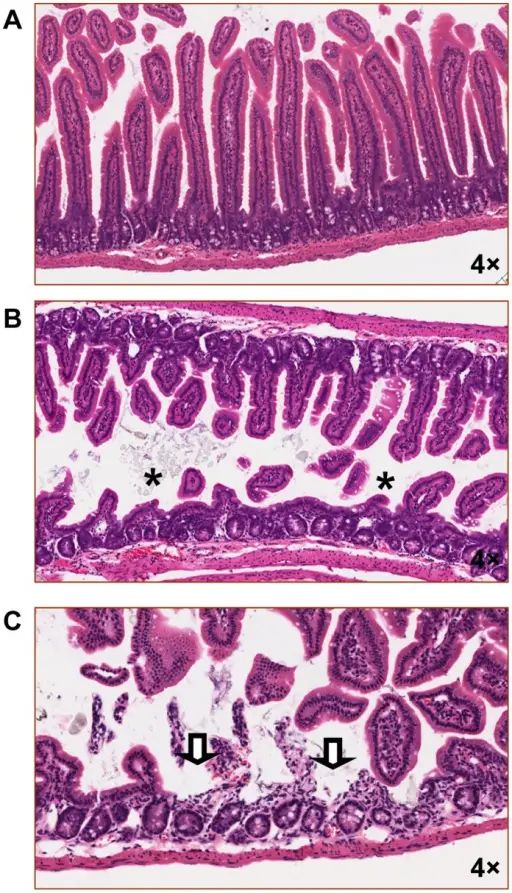Anthrax bacterial infection is a serious infectious disease caused by gram-positive, rod-shaped bacteria known as Bacillus anthracis.
What is the Pathology of Anthrax Bacterial Infection?
The pathology of anthrax bacterial infection is:
-Etiology: The cause of anthrax bacterial infection is exposure to Bacillus anthracis bacteria.
-Genes involved: Not applicable.
-Pathogenesis: The sequence of events that lead to anthrax bacterial infection are: the bacteria responsible for the disease enters the body and release the toxins called as anthrax toxins which alter cell signaling pathways in the host to interfere with innate immune responses in early stages of infection and to induce vascular collapse at late stages.
-Morphology: The morphology associated with anthrax bacterial infection shows a gram positive, non-motile, rectangular, aerobic, rod-shaped bacterium.
-Histology: The histology associated with anthrax bacterial infection shows is poorly understood.
How does Anthrax Bacterial Infection Present?
Patients with anthrax bacterial infection typically are all genders at the age range of 30–60 years old. The symptoms, features, and clinical findings associated with anthrax bacterial infection include nausea and vomiting, especially bloody vomiting, diarrhea or bloody diarrhea, headache, sore throat, painful swallowing, and hoarseness.
How is Anthrax Bacterial Infection Diagnosed?
Anthrax bacterial infection is diagnosed by biopsy of skin lesion, blood tests, and chest X-ray.
How is Anthrax Bacterial Infection Treated?
Anthrax bacterial infection is treated by antibiotics, and vaccination.
What is the Prognosis of Anthrax Bacterial Infection?
The prognosis of anthrax bacterial infection is good to poor.



